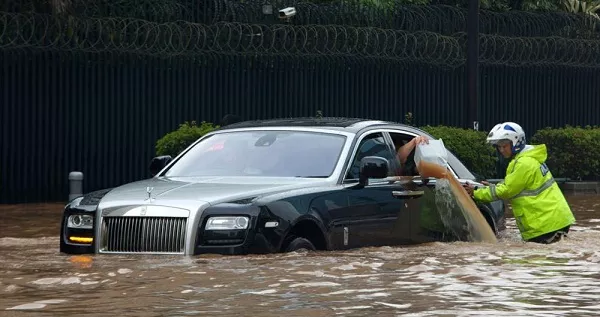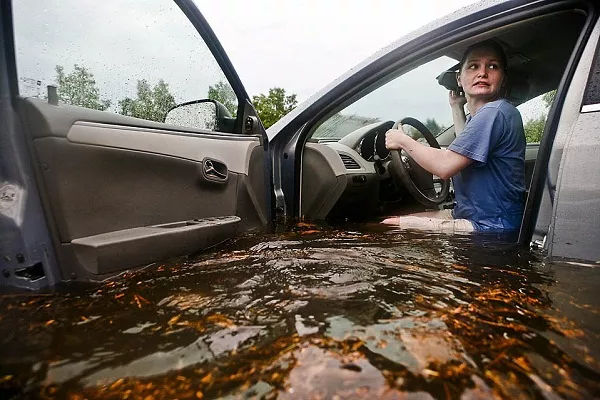1. What is water-damaged engine?
Simply put, being damaged by the water is the phenomenon when liquid (especially water) gets into the engine and the combustion chamber, causing the car to stop working.
According to experienced car engineers, as water is very difficult to compress (unlike gasoline and ordinary air), the piston in the cylinder cannot push down to complete a cycle, causing the engine to stop working.
2. Causes of water-damaged engine
First, moving on a flooded road leads to water getting into the engine's exhaust pipe, especially in models with the engine mounted at a low position like a sedan or hatchback.
Or it may be because the engine coolant flows into the combustion chamber as the result of a damaged or cracked head gasket (this phenomenon is called the blown head gasket).
Depending on the operating status of the engine, the consequences of the water damage will be different.

Water damage is the reason why you have to replace a new engine
For example, if the car is idling (when the car is parked while the engine is still running), the engine will stop when it gets damaged by water, and the engine cannot be restarted by normal operation. The impact of the water damage at this time was mild with the least amount of damage to the car.
If the car is running at high rpm, the consequences will become more serious.
Accordingly, depending on the depth of water and the location of the engine air intake, the water may overflow into one or more cylinders. In case one cylinder is filled with water, the car can still run a certain distance because the remaining cylinders still provide enough power for the car.
Why It's Dumb to Drive Through Water
However, if traveling at high speed, the engine will often stop suddenly, causing extremely dangerous consequences.
Water causes the piston not to be able to move along the cylinder but still under the pressure from the car engine camshaft, causing the piston rod to be bent, ball joints and engine crankcase to be broken. Even worse, the block assy may be cracked and the engine block must be completely replaced.
In case you have to replace the engine, you will have to spend large sums of money. Even if you do not have to replace the engine, it is potentially dangerous due to the rust in the cylinder and other engine parts, which always threatens the stable operation of the vehicle.
In addition, the vehicle's electrical components will also be affected.
3. Driving tips to avoid water damage when driving through flood
With the hazards mentioned above, the driver needs to be active and alert when engaged in traffic, and it is best to avoid moving on flooded roads when possible. The safe water level that popular family car models can safely operate is 20-25cm.
In cases of being forced to cross through flooded areas, the driver should remain calm, press the gas pedal steadily to move slowly on the first gear, avoid a sudden increase in gas throttle and stay away from using the clutch (with manual transmission).

The driver is advised to keep calm and move slowly on the first gear
>>> Worth to note: Best car features to drive through flood in the Philippines
Be alert and switch off immediately when the engine shows abnormal signs to minimize the amount of water spilling into the engine. In particular, the driver must not attempt to restart the vehicle unless the water has been removed from the combustion chamber by unplugging the spark plug and nozzle.
In such "minor" cases, it is often possible to observe the water spilling out from the cylinder and then the engine could return to normal operation.
Without the experience of car care and maintenance, it is best that the driver should find a way to push the car up a high area and call for rescue to avoid the water damage to many other parts.
Recent posts
- 4 Essential Care Tips for Maintaining Your Car Engine Nov 30, 2022
- Super Typhoon Mangkhut Closing in, Read This Safety Guide Before Driving into Flood Water in the Philippines Sep 14, 2018
- 5 Steps to Know If You Are Buying a Flood Damaged Car Sep 10, 2018
- Prevent your car from being damaged by potholes Mar 28, 2018











